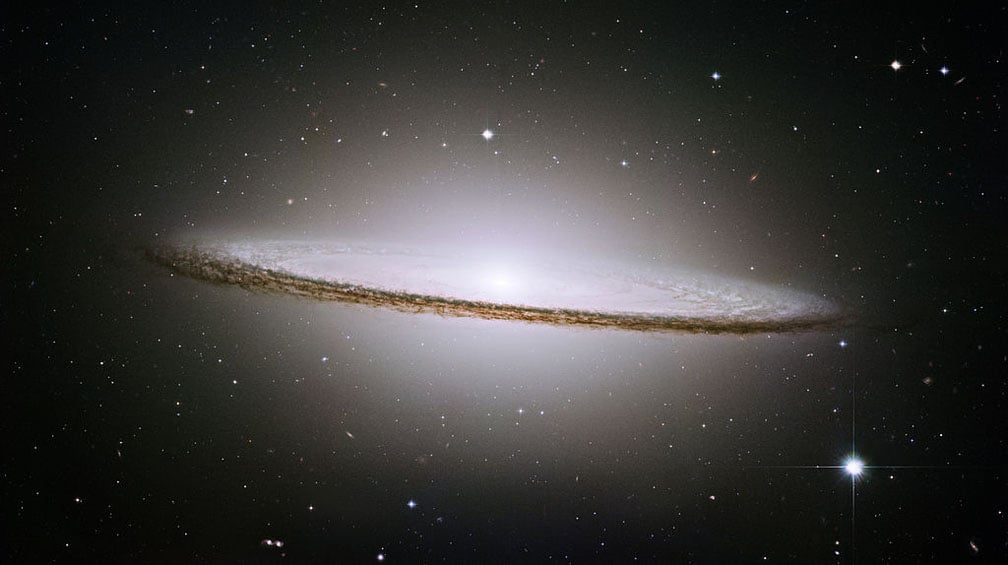NGC 4594 is an unusual galaxy. It was discovered in 1781 by Pierre Méchain, and is striking because of a symmetrical ring of dust that encircles the visible halo of the galaxy. Images taken of the galaxy in 2003 show this dusty ring in detail, where it almost resembles the brim of a large hat. So it's understandable that NGC 4594 is more commonly known as the Sombrero Galaxy. Now the James Webb Space Telescope has captured an amazingly sharp image of the galaxy, and it's revealing some interesting surprises.
Although Hubble's view of the Sombrero Galaxy is stunning, it is bound by the limits of the optical spectrum. In the Hubble image, the thick dust ring obscures any stars that may be forming within it, and the brilliance of the active black hole at the heart of the galaxy outshines any details at the center of the galaxy. Given what we know about galaxies and star formation, it was thought that the dust ring could hide stellar nurseries where new stars are being born. And the central region of the galaxy likely held a bulge of stars similar to that of other galaxies.
The JWST image reveals a very different story. This particular image was captured by Webb's Mid-Infrared Instrument (MIRI), which can peer through much of the galaxy's dust. It reveals clumps of warm molecular gas within the brim of the galaxy, but surprisingly few young stars. It appears that the dust ring is not a significant source of star formation. The image also unveils the central region of the galaxy. Rather than a halo of stars surrounding the black hole, there is a flat disk. While the central black hole is active, it is a low luminosity galactic nucleus, which is again surprising given that it does produce jets of plasma like more active galactic nuclei.
Overall, the Sombrero Galaxy is much more unusual than we expected, and while these are only the first detailed images from the Webb, they already promise to yield a wealth of data. Future observations will likely focus on the globular clusters of the galaxy. There are about 2,000 globular clusters within the Sombrero Galaxy, which is unusually high for a galaxy of its size. This could help explain why NGC 4594 is so different from other galaxies.
You can find more images of the Sombrero Galaxy on the Webb Space Telescope website.
 Universe Today
Universe Today

